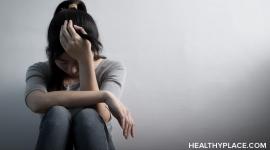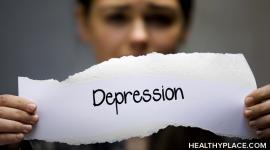Types of Depression
The Different Types of Depression
Depression is a common, treatable mental illness that can be experienced at any time in life. While the term "depression" always indicates a low or depressed mood, there are several types of depression. These different types of depression describe slight, but often important, diagnostic differences. Only a doctor can diagnose what type of depression you have.1
Major Depressive Disorder
Major depressive disorder is the type of depression on which other types are built. While other types of depression have specific features, they must all match the diagnosis of major depressive disorder as well.
Major depressive disorder is made up of one or more major depressive episodes which severely impact life functioning. A major depressive episode is two weeks or more of exhibiting five of the following symptoms (at least one of which must be of the top two):
- A depressed mood (a low mood, sadness)
- Loss of pleasure in previously pleasurable activities
- Weight and appetite changes
- Sleep disturbance
- Increase or decrease in speed of muscle activity
- Fatigue, loss of energy
- Extremely low self-esteem
- Difficulty with thinking and concentration
- Repeated thoughts of death, dying or suicide
- A suicide attempt or plan
In order to be diagnosed with this type of depression, the symptoms must not be better explained by another physical or psychological disorder.
Depression with Melancholic Features
This form of depression requires a lack of pleasure from almost all stimuli previously found pleasurable and requires the addition of at least three of the following symptoms:
- A depressed mood that is distinctly different then that felt when a loved one dies
- Depression that is worse in the morning
- Waking up 2 hours earlier than usual
- Observable muscle slowing or speeding up
- Significant weight loss or anorexia
- Extreme feelings of guilt
Depression with Catatonic Features
This type of depression can be very hard to treat due to the withdrawal of the patient from all those around them. Depression with catatonic features requires two of the following symptoms:
- Muscle immobility, trance-like
- Muscle activity without reason
- Extreme negativism or mutism
- Unusual posturing, grimacing and movements
- Repetition of the words or actions of others
Atypical Depression
Atypical depression includes a mood that is changeable by outside stimuli. Two or more of the following symptoms must also be present:
- Significant weight gain or appetite
- Increased sleep
- Feelings of heaviness in the extremities that lead to impaired functioning
- Sensitivity to interpersonal rejection
Seasonal Affective Disorder
Seasonal affective disorder, often known as SAD, is one of the types of depression that require specific timing of depressive episodes rather than a specific set of symptoms. This type of depression requires depressive episodes that correspond with a season. These depressive episodes must have occurred for at least two years and the seasonal depressive episodes must significantly outnumber the nonseasonal episodes (if present).
Postpartum Depression
Postpartum depression (PPD) also depends on episode timing. While most new mothers experience the "baby blues," a full-blown major depressive episode can develop for between 10% - 15% of women following childbirth. PPD is made up of major depressive episode(s) indistinguishable from any other major depressive episode, with the exception of timing. Extreme sadness, tearfulness, anxiety and despair are common in this type of depression.
Depressive Disorders Not Otherwise Specified
As with most mental illness, there is a type of depression known as not otherwise specified (NOS), which allows a clinician to diagnose depression in someone who does not perfectly fit into the current diagnostic model. Post-coital dysphoria, or depression after sex, may fall into the NOS depression category.
Dysthymia
Dysthymia is sometimes confused with a subtype of depression but is actually a disorder in its own right. Dysthymia is diagnosed in children and adolescents when a depressed or irritable mood is present for more than one year. Dysthymia is not considered as severe a diagnosis as other types of depression.2
Dysthymia diagnosis is complicated, as it must take into account the individual’s developmental stage and personal history. However, many of the symptoms of other types of depression are part of the diagnostic criteria of dysthymia. Dysthymia is only diagnosed when another type of depression does not better explain the symptoms.
More information on:
- Atypical Depression
- Dysthymia
- Major Depression
- Postpartum Depression
- PMDD (Premenstrual Dysphoric Disorder
- Seasonal Affective Disorder
APA Reference
Tracy, N.
(2021, December 30). Types of Depression, HealthyPlace. Retrieved
on 2025, December 19 from https://www.healthyplace.com/depression/depression-information/types-of-depression-different-types-of-depression




